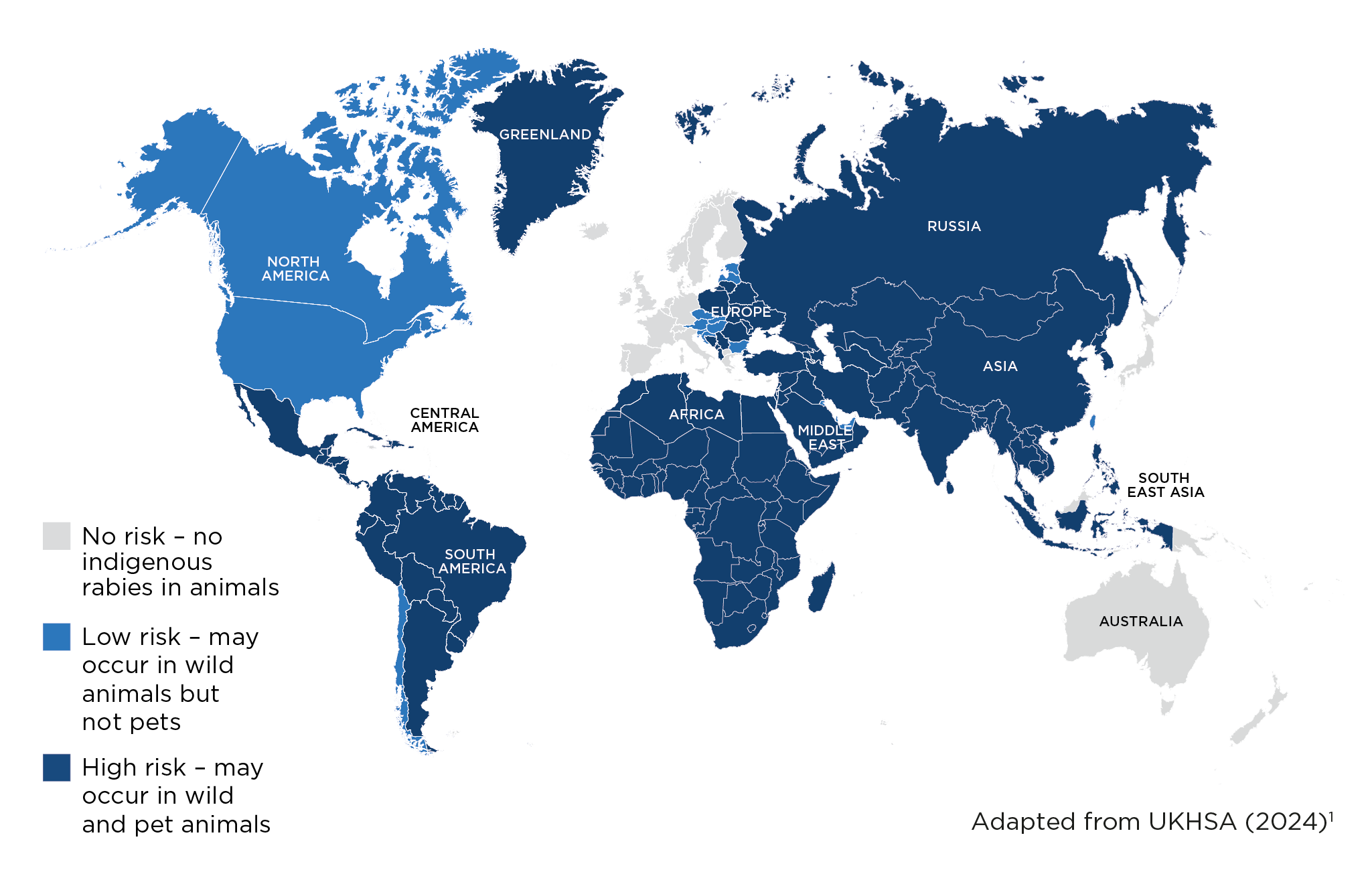Once symptoms are present, rabies is almost always fatal, so prevention and early treatment are important.2
Disease video
Risk areas for Rabies

FAQs
-
Key fact
-
How do you get rabies?
Being bitten or scratched by infected animals such as dogs (which account for up to 99% of human cases), bats or foxes. The rabies virus is found in saliva.3
-
Which countries are affected by rabies?
Rabies occurs in over 100 countries in the world but some countries, particularly parts of Africa and Asia, are high-risk areas (see map).1,3
-
What are the symptoms of rabies?
The initial symptoms can include pain and tingling/numbness around the site of the wound, nausea, vomiting, and even sometimes a fear of water (hydrophobia). As it spreads through the brain, it can cause hyperactivity or changes in consciousness and paralysis.3
In the majority of cases, it usually takes 1-3 months before symptoms to start to show, although this has been shown to take up to 1 year. 3
-
How serious is rabies?
By the time symptoms develop, few people survive.3
-
Can I prevent getting rabies?
You can take the following precautions to help reduce your risk of infection:
- Visit your nearest convenient pharmacy or specialist travel health clinic for a risk assessment before your trip
- Avoid contact with animals that may bite4
- If you are bitten or scratched, the wound should be cleaned thoroughly with plenty of soap and water, and treated with a disinfectant containing iodine or another substance that kills viruses.4 Seek medical help immediately.
Ready to get started? Check now for your nearest travel health clinic.
Get friendly advice from the UK's largest network of travel clinics*.
* This list is not exhaustive and other travel health providers are available.
References
- UK Health Security Agency. Rabies risks in terrestrial animals by country. May 2024. Available online: https://www.gov.uk/government/publications/rabies-risks-by-country/rabies-risks-in-terrestrial-animals-by-country. (Last accessed May 2025).
- TravelHealthPro. Topics in brief. Rabies. Available online: https://travelhealthpro.org.uk/disease/148/rabies (Last accessed May 2025)
- World Health Organization. Weekly Epidemiological Record. Rabies vaccines: WHO Position Paper. April 2018. Available online: https://apps.who.int/iris/bitstream/handle/10665/272371/WER9316.pdf?ua=1 (Last accessed May 2025)
- Centers for Disease Control and Prevention. Yellow Book 2026. Travel-Related Infections & Diseases. Rabies. April 2025. Available online https://www.cdc.gov/yellow-book/hcp/travel-associated-infections-diseases/rabies.html. (Last accessed May 2025)
UK-BOTB-2500020 May 2025
